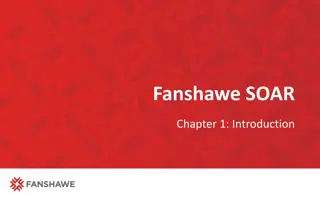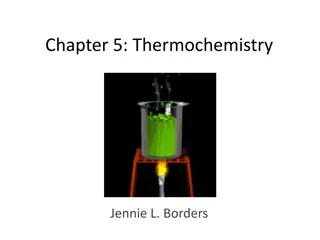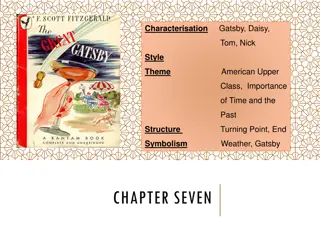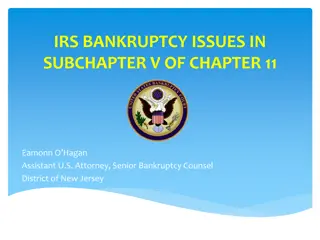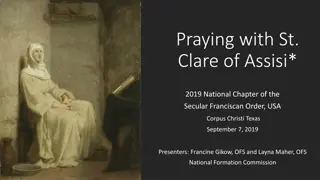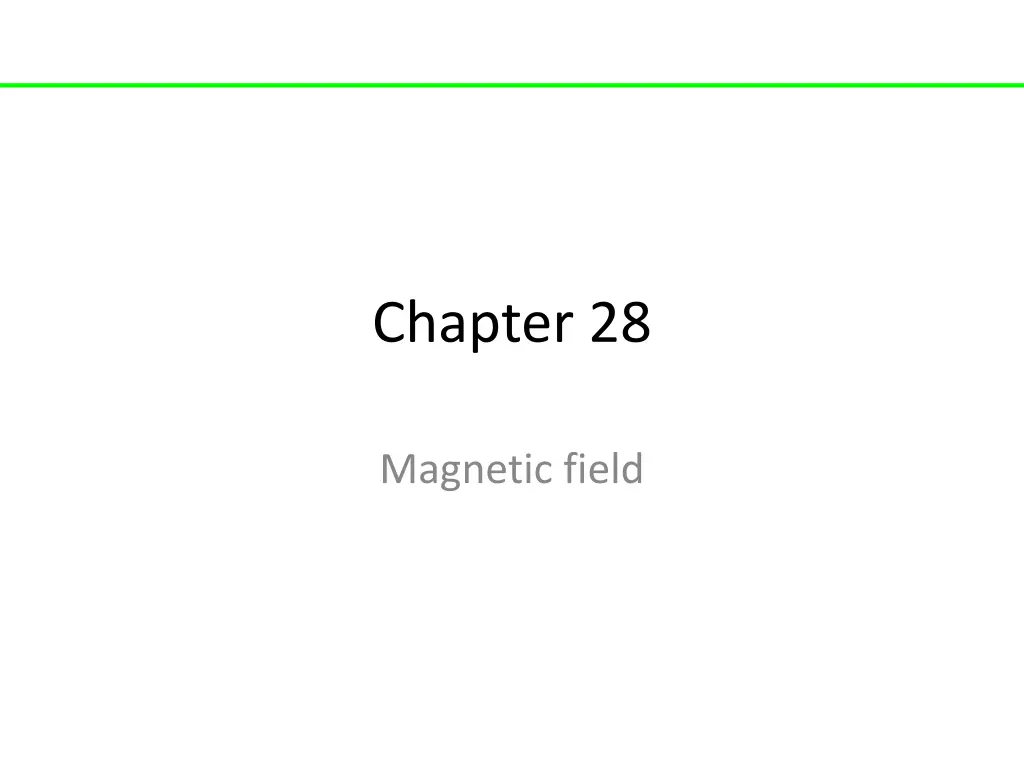
Magnetic Field Fundamentals
Explore the basics of magnetic fields including north and south poles, magnetic field lines, magnetic field strength, and the generation of magnetic fields. Learn about different ways to produce a magnetic field and understand the vector components in terms of direction and products.
Download Presentation

Please find below an Image/Link to download the presentation.
The content on the website is provided AS IS for your information and personal use only. It may not be sold, licensed, or shared on other websites without obtaining consent from the author. If you encounter any issues during the download, it is possible that the publisher has removed the file from their server.
You are allowed to download the files provided on this website for personal or commercial use, subject to the condition that they are used lawfully. All files are the property of their respective owners.
The content on the website is provided AS IS for your information and personal use only. It may not be sold, licensed, or shared on other websites without obtaining consent from the author.
E N D
Presentation Transcript
Chapter 28 Magnetic field
Every magnet has north and south poles. 1N 1N N Like poles repulse and unlike poles attracts. Magnetic filed line is the path followed by unit north pole. Though there is no single north pole exist in nature S
B The force acting on unit north pole is called magnetic field strength or simply magnetic field. It is denoted by B . B Q P Q P SI unit of B = Tesla (T) The direction of B at a point is given by a tangent at the point in a filed line. Its cgs unit = Gauss (G) 1G = 10-4 T The field due to small bar magnet is about 100G
B Anticlockwise current N N I Current in a circular loop generate magnetic field. The direction of axial magnetic field is given by right hand thumb rule. SS
clockwise current S I B N Clockwise current generates downward magnetic field in the axis of the coil.
clockwise Field B Anticlockwise field I Circular current gives vertical magnetic current. Circular field gives vertical magnetic field. B generates I and I generates B
28.2.1. Which one of the following choices is not a possible way to produce a magnetic field? a) Set up a current in a long, straight wire. b) Uniformly distribute charges over the surface of a conductor. c) Make an object out of materials that have an intrinsic magnetic field. d) Pass a current through a coil of wire.
3 Dimensional vector direction j X . Out of the page (k) Into the page (-k) i
The Vector Product in Terms of Vector Components = c a b = + + = + b j b k c + = + c j c k + , , a a i a j a k b b i c i x y z x y c , z x y z The vector components of vector are given by the equations , x y z z y y c a b a b c = z x x z a b a b = = c a b a b z x y y x No te: Those familiar with the use of determinants ca n us e the expressio n i j k a b i k a b = a b a b j x y z x y z N ote: The order of the two vectors in the cross pro ( a b du ct is important : ). = b a
When a particle moves in the magnetic field B with velocity v , it experience a force FB B i k ( ) i v k = FB q v B j q -q ( j ) F j v F At Bottom At top ( i i ) F ( ) ( j ) v ( ) = F q vi Bk = ( ) F q v i Bk B B = F ( ) = ( j F qvB j ) FB qvB j B ( i ) v B j Left Side Right Side i ( ) F ( ) k = = F q vj Bk F q v i Bk F B v B Right hand rule of +ve charge = = F qvBi ( ) F qvB i B B B v
j X = Right, Y = Front (counterclockwise move), Z = Up v v(f) j B B (r) x i B F(d) ( ( ) = = i FB FB q v B v ( ) ) = ( FB F q v B q vj Bi ( ) ) = q vi Bj ( ) i B = FB qvB j = F qvB i j B = ( ) F qvB k = ( k ) FB qvB B i k j
j v i k j B i B v When a ve charged particle moves in the magnetic field B with velocity v , it experience a force FB -q The force will act along k direction which will be into the page denoted by ( ( ) = = FB FB q v B ) ( ( k q vj Bi ) i ) V = = FB FB qvB j qvB For ve The left hand rule is being used = FB qvB k F
v i B ( ) = FB q v B ( ) = sin( ) FB q = v j Bi ) sin( FB qvB k The force will act along k direction which will be into the page denoted by +z -x 0
T072: Q#18: A 2.0 C charge moves in a uniform magnetic field with a velocity of (2.0 i + 4.0 j) m/s and experience a magnetic force of 12 N along the +z-axis. The x component of the magnetic field is equal to zero. Determine the y component of the magnetic field? (Ans: +3.0 T) T71-Q21. An electron with a velocity of v = (4.0 104 i + 3.0 106 j) m/s enters a region of magnetic field B = (0.40 i) T. The magnetic force on the electron is: (A 1.9 10-13 k N) T081-Q5. A particle (mass = 6.0 mg) moves with a speed of 4.0 km/s in a direction that makes an angle of 37 above the positive x axis in the x-y plane. At the instant it enters a magnetic field of (5.0 x 10-3 i ) T, it experiences an acceleration of (8.0 k ) m/s2. What is the charge of the particle? (Ans: 4.0 C) T111-Q19. At one instant, a charged particle is moving with velocity v = 2i+3j (m/s) in a uniform external magnetic field B = -3j (T). At that instant, the magnetic field produces a force F = 5.8 x 10-3k(N) on the particle. What is the charge of the particle? A) 9.7 10-4C
T072: Q#18: A 2.0 C charge moves in a uniform magnetic field with a velocity of (2.0 i + 4.0 j) m/s and experience a magnetic force of 12 N along the +z-axis. The x component of the magnetic field is equal to zero. Determine the y component of the magnetic field? (Ans: +3.0 T)
T111-Q19. At one instant, a charged particle is moving with velocity v = 2i+3j (m/s) in a uniform external magnetic field B = -3j (T). At that instant, the magnetic field produces a force F = 5.8 x 10-3k(N) on the particle. What is the charge of the particle? A) 9.7 10-4C
L + + + + + + + + + + + y x B E 1 - - - - - - - - - - - - - - - - = 2 ( ) y at i F = qE = F 2 L E B qvB To apply force along y axis B must be applied in -z direction (into the page) t = v E v = FE= qE B ma= qE 2 2 qL 2 B = = ( i v ( )) ( ) FB q B k qvB j = y qE a = mE m = FE qE j 2 qEL = ( ) y ii 2 2 m qL 2 B = 2 2 mv q yE
T81-Q9. An ion with a charge of +4.8 10 19 C is in a region where a uniform electric field of 6.0 104 V/m is perpendicular to a uniform magnetic field of 1.8 T. If its acceleration is zero then its speed must be: (Ans: 3.3 104 m/s)
T72-Q21. What is the kinetic energy of an electron that passes in a straight line through perpendicular electric and magnetic fields if E= 4.0 kV/m and B= 8.0 mT ? (Ans: 0.71 eV)
= F q vB B i v 2 mv q -q = q vB r ( j ) F j v F ( i i ) F mv r = ( j ) v q B F j Time period (T) ( i ) v 2 2 2 r r m = = = T T v v q B
The charged particle will move in helical path if v and B are not exactly 900 ( ) = FB q v B The velocity will have vertical component which will take the particle up with constant velocity (no acceleration). FB= sin( ) qvB
mv r = q B r m Electron clockwise Proton anti-clockwise
T72-Q20. A charged particle has a kinetic energy of 10-7 joules and moves in a circular path in a uniform magnetic field. If the magnitude of the magnetic force on the particle is 1.5 x 10-4 N, what is the radius of the circular motion? (Ans: 1.3 mm) T62-Q19. An electron moving perpendicular to a 50 T magnetic field goes through a circular trajectory. What is the time required to complete one revolution? (7.15 x 10-7 s ) T32-Q#5: Which one of the following statements is FALSE (NOT TRUE). A uniform magnetic field (Ans: changes the kinetic energy of a charge.) T71-Q20. A potential difference of 600 V is applied to accelerate an electron from rest. This accelerated electron enters a uniform magnetic field and completes one revolution in 9 nano seconds. Determine the radius of the electron orbit? (Ans: 0.021 m)
T72-Q20. A charged particle has a kinetic energy of 10-7 joules and moves in a circular path in a uniform magnetic field. If the magnitude of the magnetic force on the particle is 1.5 x 10-4 N, what is the radius of the circular motion? (Ans: 1.3 mm)
T32-Q#5: Which one of the following statements is FALSE (NOT TRUE). A uniform magnetic field (Ans: changes the kinetic energy of a charge.) T71-Q20. A potential difference of 600 V is applied to accelerate an electron from rest. This accelerated electron enters a uniform magnetic field and completes one revolution in 9 nano seconds. Determine the radius of the electron orbit? (Ans: 0.021 m)
-e -e -e -e ( ) = FB q v B B -e -e -e -e k ( ) -e -e -e -e = ( ) FB q v j B k -e -e -e -e L -e -e -e -e = FB qvB L it i -e -e -e -e FB FB= B -e -e -e -e t v -e -e -e -e i -e -e -e -e FB= iLB -e -e -e -e -e -e -e -e ( ) = FB i L B -e -e -e -e B Length is a vector quantity. Its direction is taken in the direction of current. F L
For electron ( ) -e -e -e -e B k = FB q v B -e -e -e -e -e -e -e -e -e -e -e -e L -e -e -e -e FB -e -e -e -e i For Current -e -e -e -e v -e -e -e -e ( ) -e -e -e -e = FB i L B -e -e -e -e -e -e -e -e -e -e -e -e
clockwise Field B Anticlockwise field I A straight current carrying wire generates circular magnetic field The direction of the field at a point is given by the tangent at a point
( ) ( ) = F i L B = 12 1 ( 1 2 F i L B 21 2 2 1 ) ( ) = ( ) FB i L j B k = 1 1 1 F i L j B k 21 2 2 1 = F i L B i 21= F i L B i 12 1 1 2 x 2 2 1 F F x i1 i2 Two thin conductors with opposite current will repeal each other
( ) ( ) ) = F i L B = 12 1 ( 1 2 F i L B 21 ( L 2 2 1 ) ) k = ( ) ( F i L j B = 12 1 1 2 ( ) F i j B k 21 2 2 1 12= F i L B i = F i L B i 1 1 2 x 21 2 2 1 F F x i1 i2 Two thin conductors with current in the same direction will attract each other
T111-Q20. A 10 g wire of length L = 70 cm is suspended by a pair of flexible leads, as shown Figure 9. The wire carries a current of 0.7 A that flows to the right. What is the minimum magnetic field needed to have zero tension in the leads? A) 0.2 T, into the page
T62-Q21: The following Fig. 1 shows a straight horizontal length of copper wire of mass m = 50 g and length L = 1.0 m lies in a uniform magnetic field B = 0.5 T directed out of the page. What is the magnitude and direction of the current in the wire to balance the gravitational force? (Ans: 0.98 A, to the left) B L = 1.0 m T51-Q#25. A straight wire of linear mass density 100 g/m is located perpendicular to a magnetic field of 0.5 T as shown in the figure 2. What current in the wire is needed to balance the gravitational force on the wire? ( Ans: 2.0 A to the right) T81- Q8. Fig 5 showsa loop of wire carrying a current of 2.0 A. The loop has the shape of a right angled triangle with two equal sides, each 20 cm long. A 1.5 T uniform magnetic field is parallel to the hypotenuse. The resultantmagnetic force on the two equal sides has a magnitude of: (Ans: 0 N)
T62-Q21: The following Fig. 1 shows a straight horizontal length of copper wire of mass m = 50 g and length L = 1.0 m lies in a uniform magnetic field B = 0.5 T directed out of the page. What is the magnitude and direction of the current in the wire to balance the gravitational force? (Ans: 0.98 A, to the left) B L = 1.0 m
RS QR and SP PQ ( ) ( ( i ) = FB i L B = 0 F = FB i L B B ( ) i B = ( ) FB i L j ) i B = FB j L = FB iLB k = ( k ) FB iLB Q R Pull up! Push down! S N x S P Fb up Fb down The equal and opposite forces on the rectangular coil will make it to rotate. This is the principle of electric motor
b 2 b 2 = + F F B B = = b b b F F = [ ( )] b i L B b S N x L i will always be normal to B = b iLB b = sin( ) iLbB For N number of turns = = sin( ) NiLbB Ni A B Area (A) = Lb NiAB = sin( ) The direction of A is given by right hand thump rule xA A A A
= Ni A B S N x L = Ni B b = = A Magnetic moment The direction of is same as the direction of A In Magnetic Field In Electric Field = = p E B . . = = U B U p E . = = WB U B
T72-Q19. A current loop is oriented in three different positions relative to a uniform magnetic field. In position 1 the plane of the loop is perpendicular to the field lines. In position 2 and 3 the plane of the loop is parallel to the field lines as shown in Fig. 1. The torque is maximum in: (Ans: positions 2 and 3) T81-Q#25. Q6. A square loop of side 0.20 m consists of 50 closely wrapped turns, each carrying a current of 0.50 A. As shown in Fig 4, the loop is oriented in a uniform magnetic field of 0.40 T directed in the positive y direction. What is the magnitude of the torque on the loop? (Ans: 0.35 N.m) T111-Q21. A 26-turn rectangular coil of wire carrying a current of 0.25 A is placed in a uniform magnetic field of magnitude 0.050 T. The coil is 2.5 cm long and has width w. The torque acting on the coil is 2.3 10-4 N.m. If the angle between the magnetic field and the plane of the coil is 55o, then the width w of the coil is: A) 4.9 cm T103-Q22. A loop of current-carrying wire has a magnetic dipole moment of 5.0 10-4 A m2. The magnetic moment initially is aligned with a 0.50-T magnetic field. Calculate the work done by an external agent to rotate the loop so its dipole moment is perpendicular to the field and hold it in that orientation. A) 2.5 10-4 J
T72-Q19. A current loop is oriented in three different positions relative to a uniform magnetic field. In position 1 the plane of the loop is perpendicular to the field lines. In position 2 and 3 the plane of the loop is parallel to the field lines as shown in Fig. 1. The torque is maximum in: (Ans: positions 2 and 3)
T81-Q#25. Q6. A square loop of side 0.20 m consists of 50 closely wrapped turns, each carrying a current of 0.50 A. As shown in Fig 4, the loop is oriented in a uniform magnetic field of 0.40 T directed in the positive y direction. What is the magnitude of the torque on the loop? (Ans: 0.35 N.m)
T102-Q24. Figure 6a shows two concentric coils, lying in the same plane, carry currents in opposite directions. The current in the larger coil 1 is fixed. Current i2 in coil 2 can be varied. Figure 6b gives the net magnetic moment of the two- coil system as a function of i2. If the current in coil 2 is then reversed, what is the magnitude of the net magnetic moment (in A.m2) of the two-coil system when i2 = 8.0 mA? A) 5.2 10-5
For positive charge ( ) Magnetic Dipole = FB q v B = B For negative charge = ( ) Ni FB q v B = = A Magnetic moment . = = U B For current ( ) . = = FB i L B WB U B Direction of L is the direction of current i i 2 mv = = = = = k ma eE mg qvB iLB k r j j = = W K U negative Positive
T103 T103-Q19. At one instant an electron is moving in the xy plane, the components of its velocity being vx = 5.0 105 m/s and vy = 3.0 105 m/s. A magnetic field of 0.80 T is in the positive x direction. At that instant the magnetic force on the electron is A) 3.8 10-14 N along the positive z direction T103-Q20. An electron is traveling in the positive x direction. A uniform electric field E is in the negative y direction as shown in Figure 5. The magnetic field that will make the electron move in a straight line has a direction A) into the page T103-Q21. A loop of wire carrying a current of 2.0 A is in the shape of a right angled triangle with two equal sides, each 15 cm long as shown in Figure 6. A 0.70 T uniform magnetic field is parallel to the hypotenuse. The magnitude of the net magnetic force on the loop is: A) zero
T103-Q22. A loop of current-carrying wire has a magnetic dipole moment of 5.0 10-4 A m2. The magnetic moment initially is aligned with a 0.50-T magnetic field. Calculate the work done by an external agent to rotate the loop so its dipole moment is perpendicular to the field and hold it in that orientation. A) 2.5 10-4 J T103-Q23. An electron moves along a horizontal circle in a region of uniform magnetic field of magnitude 4.0 mT that is directed out of the page. It experiences a magnetic force of magnitude 3.2 x 10-15 N. Calculate the radius of the circular path. A) 7.1 mm
T102-Q21. Figure 5 shows three situations in which an electron moves at velocity v through a uniform magnetic field Band experiences a magnetic force FB . Determine which situation(s) are physically reasonable for the orientations of the vectors. A) None of the them T102-Q23. A 50 cm long wire carries a 0.50 A current along the positive x-axis through a magnetic field B = (6i+8k) mT. What is the magnitude of the magnetic force on the wire? A) 2.5 mN T102-Q24. Figure 6a shows two concentric coils, lying in the same plane, carry currents in opposite directions. The current in the larger coil 1 is fixed. Current i2 in coil 2 can be varied. Figure 6b gives the net magnetic moment of the two-coil system as a function of i2. If the current in coil 2 is then reversed, what is the magnitude of the net magnetic moment (in A.m2) of the two-coil system when i2 = 8.0 mA? A) 5.2 10-5



